
h2o-llmstudio
H2O LLM Studio - a framework and no-code GUI for fine-tuning LLMs. Documentation: https://docs.h2o.ai/h2o-llmstudio/
Stars: 4110
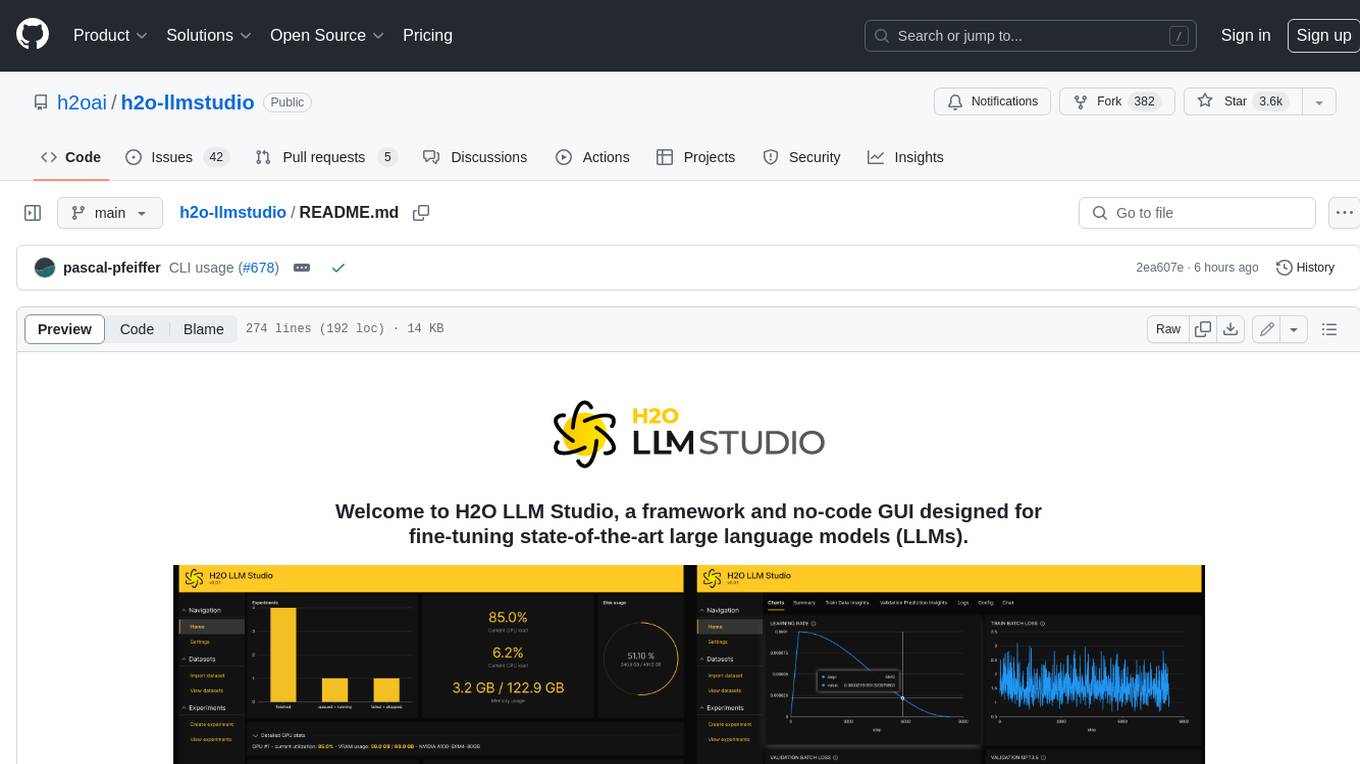
H2O LLM Studio is a framework and no-code GUI designed for fine-tuning state-of-the-art large language models (LLMs). With H2O LLM Studio, you can easily and effectively fine-tune LLMs without the need for any coding experience. The GUI is specially designed for large language models, and you can finetune any LLM using a large variety of hyperparameters. You can also use recent finetuning techniques such as Low-Rank Adaptation (LoRA) and 8-bit model training with a low memory footprint. Additionally, you can use Reinforcement Learning (RL) to finetune your model (experimental), use advanced evaluation metrics to judge generated answers by the model, track and compare your model performance visually, and easily export your model to the Hugging Face Hub and share it with the community.
README:
Welcome to H2O LLM Studio, a framework and no-code GUI designed for
fine-tuning state-of-the-art large language models (LLMs).
- With H2O LLM Studio, you can
- Quickstart
- What's New
- Setup
- Run H2O LLM Studio GUI
- Run H2O LLM Studio GUI using Docker from a nightly build
- Run H2O LLM Studio GUI by building your own Docker image
- Run H2O LLM Studio with command line interface (CLI)
- Troubleshooting
- Data format and example data
- Training your model
- Example: Run on OASST data via CLI
- Model checkpoints
- Documentation
- Contributing
- License
- easily and effectively fine-tune LLMs without the need for any coding experience.
- use a graphic user interface (GUI) specially designed for large language models.
- finetune any LLM using a large variety of hyperparameters.
- use recent finetuning techniques such as Low-Rank Adaptation (LoRA) and 8-bit model training with a low memory footprint.
- use Reinforcement Learning (RL) to finetune your model (experimental)
- use advanced evaluation metrics to judge generated answers by the model.
- track and compare your model performance visually. In addition, Neptune and W&B integration can be used.
- chat with your model and get instant feedback on your model performance.
- easily export your model to the Hugging Face Hub and share it with the community.
For questions, discussing, or just hanging out, come and join our Discord!
Use cloud-based runpod.io instance to run the H2O LLM Studio GUI.
Using CLI for fine-tuning LLMs:
- PR 788 New problem type for Causal Regression Modeling allows to train single target regression data using LLMs.
- PR 747 Fully removed RLHF in favor of DPO/IPO/KTO optimization.
-
PR 741 Removing separate max length settings for prompt and answer in favor of a single
max_lengthsettings better resemblingchat_templatefunctionality fromtransformers. -
PR 592 Added
KTOPairLossfor DPO modeling allowing to train models with simple preference data. Data currently needs to be manually prepared by randomly matching positive and negative examples as pairs. - PR 592 Starting to deprecate RLHF in favor of DPO/IPO optimization. Training is disabled, but old experiments are still viewable. RLHF will be fully removed in a future release.
- PR 530 Introduced a new problem type for DPO/IPO optimization. This optimization technique can be used as an alternative to RLHF.
- PR 288 Introduced Deepspeed for sharded training allowing to train larger models on machines with multiple GPUs. Requires NVLink. This feature replaces FSDP and offers more flexibility. Deepspeed requires a system installation of cudatoolkit and we recommend using version 12.1. See Recommended Install.
- PR 449 New problem type for Causal Classification Modeling allows to train binary and multiclass models using LLMs.
- PR 364 User secrets are now handled more securely and flexible. Support for handling secrets using the 'keyring' library was added. User settings are tried to be migrated automatically.
Please note that due to current rapid development we cannot guarantee full backwards compatibility of new functionality. We thus recommend to pin the version of the framework to the one you used for your experiments. For resetting, please delete/backup your data and output folders.
H2O LLM Studio requires a machine with Ubuntu 16.04+ and at least one recent Nvidia GPU with Nvidia drivers version >= 470.57.02. For larger models, we recommend at least 24GB of GPU memory.
For more information about installation prerequisites, see the Set up H2O LLM Studio guide in the documentation.
For a performance comparison of different GPUs, see the H2O LLM Studio performance guide in the documentation.
The recommended way to install H2O LLM Studio is using pipenv with Python 3.10. To install Python 3.10 on Ubuntu 16.04+, execute the following commands:
sudo add-apt-repository ppa:deadsnakes/ppa
sudo apt install python3.10
sudo apt-get install python3.10-distutils
curl -sS https://bootstrap.pypa.io/get-pip.py | python3.10If deploying on a 'bare metal' machine running Ubuntu, one may need to install the required Nvidia drivers and CUDA. The following commands show how to retrieve the latest drivers for a machine running Ubuntu 20.04 as an example. One can update the following based on their OS.
wget https://developer.download.nvidia.com/compute/cuda/repos/ubuntu2004/x86_64/cuda-ubuntu2004.pin
sudo mv cuda-ubuntu2004.pin /etc/apt/preferences.d/cuda-repository-pin-600
wget https://developer.download.nvidia.com/compute/cuda/12.1.0/local_installers/cuda-repo-ubuntu2004-12-1-local_12.1.0-530.30.02-1_amd64.deb
sudo dpkg -i cuda-repo-ubuntu2004-12-1-local_12.1.0-530.30.02-1_amd64.deb
sudo cp /var/cuda-repo-ubuntu2004-12-1-local/cuda-*-keyring.gpg /usr/share/keyrings/
sudo apt-get update
sudo apt-get -y install cudaalternatively, one can install cudatoolkits in a conda environment:
conda create -n llmstudio python=3.10
conda activate llmstudio
conda install -c "nvidia/label/cuda-12.1.0" cuda-toolkitWe offer various ways of setting up the necessary python environment.
The following command will create a virtual environment using pipenv and will install the dependencies using pipenv:
make setupIf you are having troubles installing the flash_attn package, consider running
make setup-no-flashinstead. This will install the dependencies without the flash_attn package. Note that this will disable the use of Flash Attention 2 and model training will be slower and consume more memory.
You can also setup a conda virtual environment that can also deviate from the recommended setup. The Makefile contains a command setup-conda-nightly that installs a fresh conda environment with CUDA 12.4 and current nightly PyTorch.
If you wish to use another virtual environment, you can also install the dependencies using the requirements.txt file:
pip install -r requirements.txt
pip install flash-attn==2.6.1 --no-build-isolation # optional for Flash Attention 2You can start H2O LLM Studio using the following command:
make llmstudioThis command will start the H2O wave server and app. Navigate to http://localhost:10101/ (we recommend using Chrome) to access H2O LLM Studio and start fine-tuning your models!
If you are running H2O LLM Studio with a custom environment other than Pipenv, you need to start the app as follows:
H2O_WAVE_MAX_REQUEST_SIZE=25MB \
H2O_WAVE_NO_LOG=true \
H2O_WAVE_PRIVATE_DIR="/download/@output/download" \
wave run llm_studio.appIf you are using the nightly conda environment, you can run make llmstudio-conda.
Install Docker first by following instructions from NVIDIA Containers. Make sure to have nvidia-container-toolkit installed on your machine as outlined in the instructions.
H2O LLM Studio images are stored in the h2oai GCR vorvan container repository.
mkdir -p `pwd`/llmstudio_mnt
# make sure to pull latest image if you still have a prior version cached
docker pull gcr.io/vorvan/h2oai/h2o-llmstudio:nightly
# run the container
docker run \
--runtime=nvidia \
--shm-size=64g \
--init \
--rm \
-it \
-u `id -u`:`id -g` \
-p 10101:10101 \
-v `pwd`/llmstudio_mnt:/home/llmstudio/mount \
-v ~/.cache:/home/llmstudio/.cache \
gcr.io/vorvan/h2oai/h2o-llmstudio:nightlyNavigate to http://localhost:10101/ (we recommend using Chrome) to access H2O LLM Studio and start fine-tuning your models!
(Note other helpful docker commands are docker ps and docker kill.)
docker build -t h2o-llmstudio .
mkdir -p `pwd`/llmstudio_mnt
docker run \
--runtime=nvidia \
--shm-size=64g \
--init \
--rm \
-it \
-u `id -u`:`id -g` \
-p 10101:10101 \
-v `pwd`/llmstudio_mnt:/home/llmstudio/mount \
-v ~/.cache:/home/llmstudio/.cache \
h2o-llmstudioAlternatively, you can run H2O LLM Studio GUI by using our self-hosted Docker image available here.
You can also use H2O LLM Studio with the command line interface (CLI) and specify the configuration .yaml file that contains all the experiment parameters. To finetune using H2O LLM Studio with CLI, activate the pipenv environment by running make shell, and then use the following command:
python llm_studio/train.py -Y {path_to_config_yaml_file}To run on multiple GPUs in DDP mode, run the following command:
bash distributed_train.sh {NR_OF_GPUS} -Y {path_to_config_yaml_file}By default, the framework will run on the first k GPUs. If you want to specify specific GPUs to run on, use the CUDA_VISIBLE_DEVICES environment variable before the command.
To start an interactive chat with your trained model, use the following command:
python llm_studio/prompt.py -e {experiment_name}where experiment_name is the output folder of the experiment you want to chat with (see configuration).
The interactive chat will also work with model that were finetuned using the UI.
To publish the model to Hugging Face, use the following command:
make shell
python llm_studio/publish_to_hugging_face.py -p {path_to_experiment} -d {device} -a {api_key} -u {user_id} -m {model_name} -s {safe_serialization}path_to_experiment is the output folder of the experiment.
device is the target device for running the model, either 'cpu' or 'cuda:0'. Default is 'cuda:0'.
api_key is the Hugging Face API Key. If user logged in, it can be omitted.
user_id is the Hugging Face user ID. If user logged in, it can be omitted.
model_name is the name of the model to be published on Hugging Face. It can be omitted.
safe_serialization is a flag indicating whether safe serialization should be used. Default is True.
If running on cloud based machines such as runpod, you may need to set the following environment variable to allow the H2O Wave server to accept connections from the proxy:
H2O_WAVE_ALLOWED_ORIGINS="*"If you are experiencing timeouts when running the H2O Wave server remotely, you can increase the timeout by setting the following environment variables:
H2O_WAVE_APP_CONNECT_TIMEOUT="15"
H2O_WAVE_APP_WRITE_TIMEOUT="15"
H2O_WAVE_APP_READ_TIMEOUT="15"
H2O_WAVE_APP_POOL_TIMEOUT="15"All default to 5 (seconds). Increase them if you are experiencing timeouts. Use -1 to disable the timeout.
For details on the data format required when importing your data or example data that you can use to try out H2O LLM Studio, see Data format in the H2O LLM Studio documentation.
With H2O LLM Studio, training your large language model is easy and intuitive. First, upload your dataset and then start training your model. Start by creating an experiment. You can then monitor and manage your experiment, compare experiments, or push the model to Hugging Face to share it with the community.
As an example, you can run an experiment on the OASST data via CLI. For instructions, see Run an experiment on the OASST data guide in the H2O LLM Studio documentation.
All open-source datasets and models are posted on H2O.ai's Hugging Face page and our H2OGPT repository.
Detailed documentation and frequently asked questions (FAQs) for H2O LLM Studio can be found at https://docs.h2o.ai/h2o-llmstudio/. If you wish to contribute to the docs, navigate to the /documentation folder of this repo and refer to the README.md for more information.
We are happy to accept contributions to the H2O LLM Studio project. Please refer to the CONTRIBUTING.md file for more information.
H2O LLM Studio is licensed under the Apache 2.0 license. Please see the LICENSE file for more information.
For Tasks:
Click tags to check more tools for each tasksFor Jobs:
Alternative AI tools for h2o-llmstudio
Similar Open Source Tools

h2o-llmstudio
H2O LLM Studio is a framework and no-code GUI designed for fine-tuning state-of-the-art large language models (LLMs). With H2O LLM Studio, you can easily and effectively fine-tune LLMs without the need for any coding experience. The GUI is specially designed for large language models, and you can finetune any LLM using a large variety of hyperparameters. You can also use recent finetuning techniques such as Low-Rank Adaptation (LoRA) and 8-bit model training with a low memory footprint. Additionally, you can use Reinforcement Learning (RL) to finetune your model (experimental), use advanced evaluation metrics to judge generated answers by the model, track and compare your model performance visually, and easily export your model to the Hugging Face Hub and share it with the community.
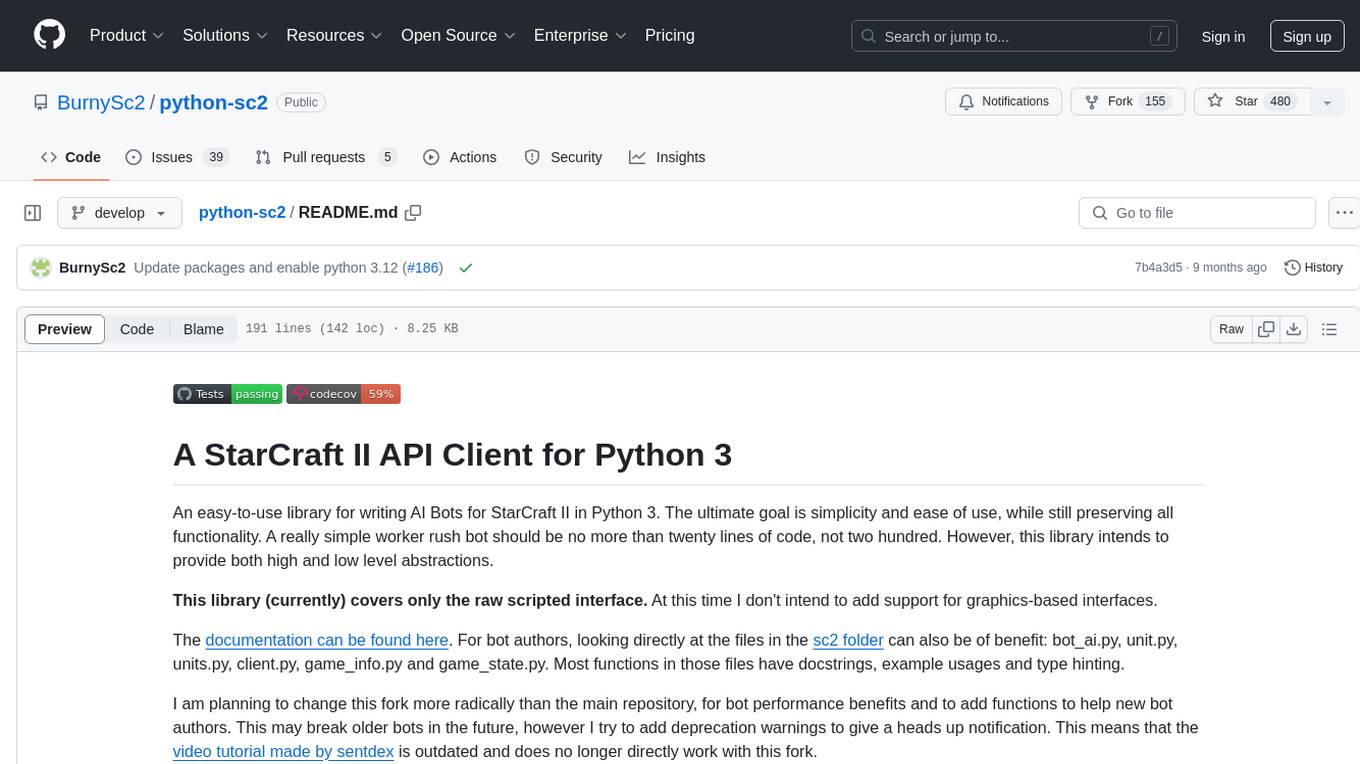
python-sc2
python-sc2 is an easy-to-use library for writing AI Bots for StarCraft II in Python 3. It aims for simplicity and ease of use while providing both high and low level abstractions. The library covers only the raw scripted interface and intends to help new bot authors with added functions. Users can install the library using pip and need a StarCraft II executable to run bots. The API configuration options allow users to customize bot behavior and performance. The community provides support through Discord servers, and users can contribute to the project by creating new issues or pull requests following style guidelines.
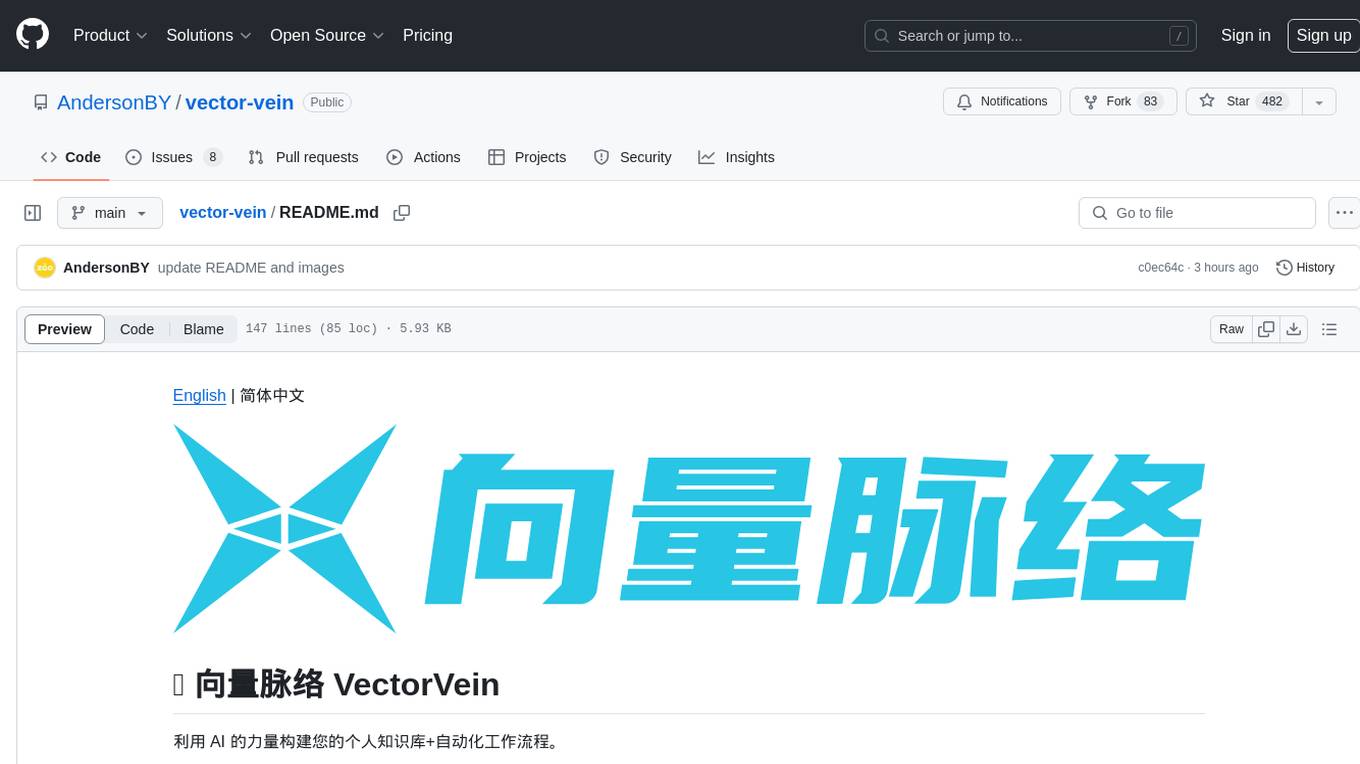
vector-vein
VectorVein is a no-code AI workflow software inspired by LangChain and langflow, aiming to combine the powerful capabilities of large language models and enable users to achieve intelligent and automated daily workflows through simple drag-and-drop actions. Users can create powerful workflows without the need for programming, automating all tasks with ease. The software allows users to define inputs, outputs, and processing methods to create customized workflow processes for various tasks such as translation, mind mapping, summarizing web articles, and automatic categorization of customer reviews.
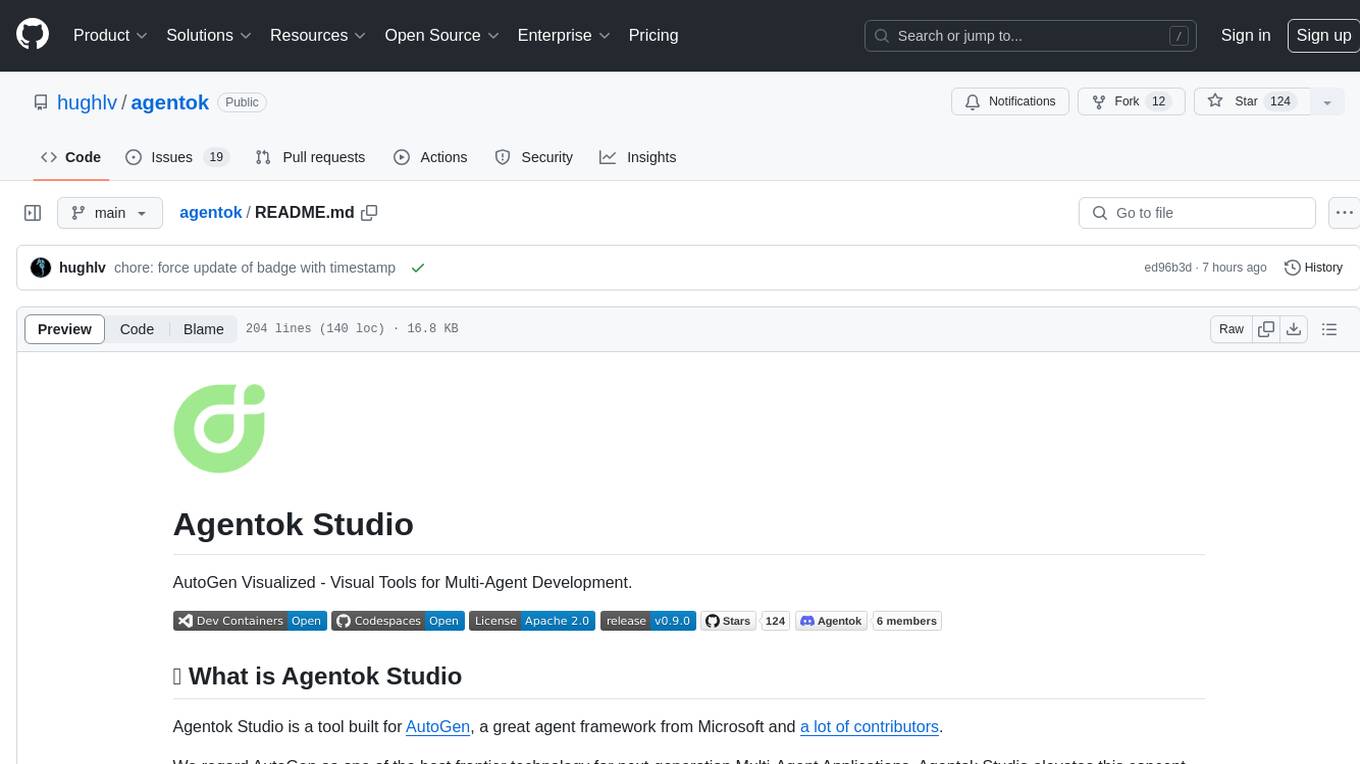
agentok
Agentok Studio is a visual tool built for AutoGen, a cutting-edge agent framework from Microsoft and various contributors. It offers intuitive visual tools to simplify the construction and management of complex agent-based workflows. Users can create workflows visually as graphs, chat with agents, and share flow templates. The tool is designed to streamline the development process for creators and developers working on next-generation Multi-Agent Applications.
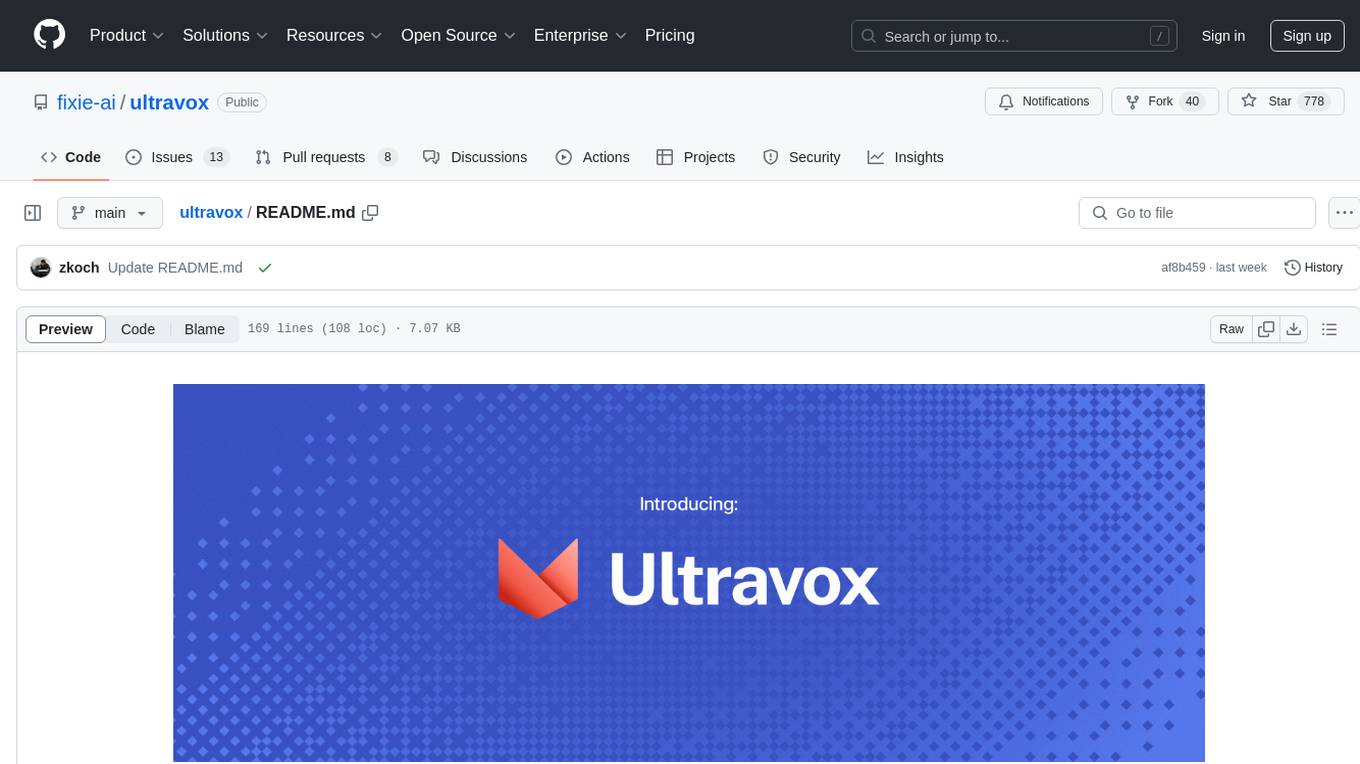
ultravox
Ultravox is a fast multimodal Language Model (LLM) that can understand both text and human speech in real-time without the need for a separate Audio Speech Recognition (ASR) stage. By extending Meta's Llama 3 model with a multimodal projector, Ultravox converts audio directly into a high-dimensional space used by Llama 3, enabling quick responses and potential understanding of paralinguistic cues like timing and emotion in human speech. The current version (v0.3) has impressive speed metrics and aims for further enhancements. Ultravox currently converts audio to streaming text and plans to emit speech tokens for direct audio conversion. The tool is open for collaboration to enhance this functionality.
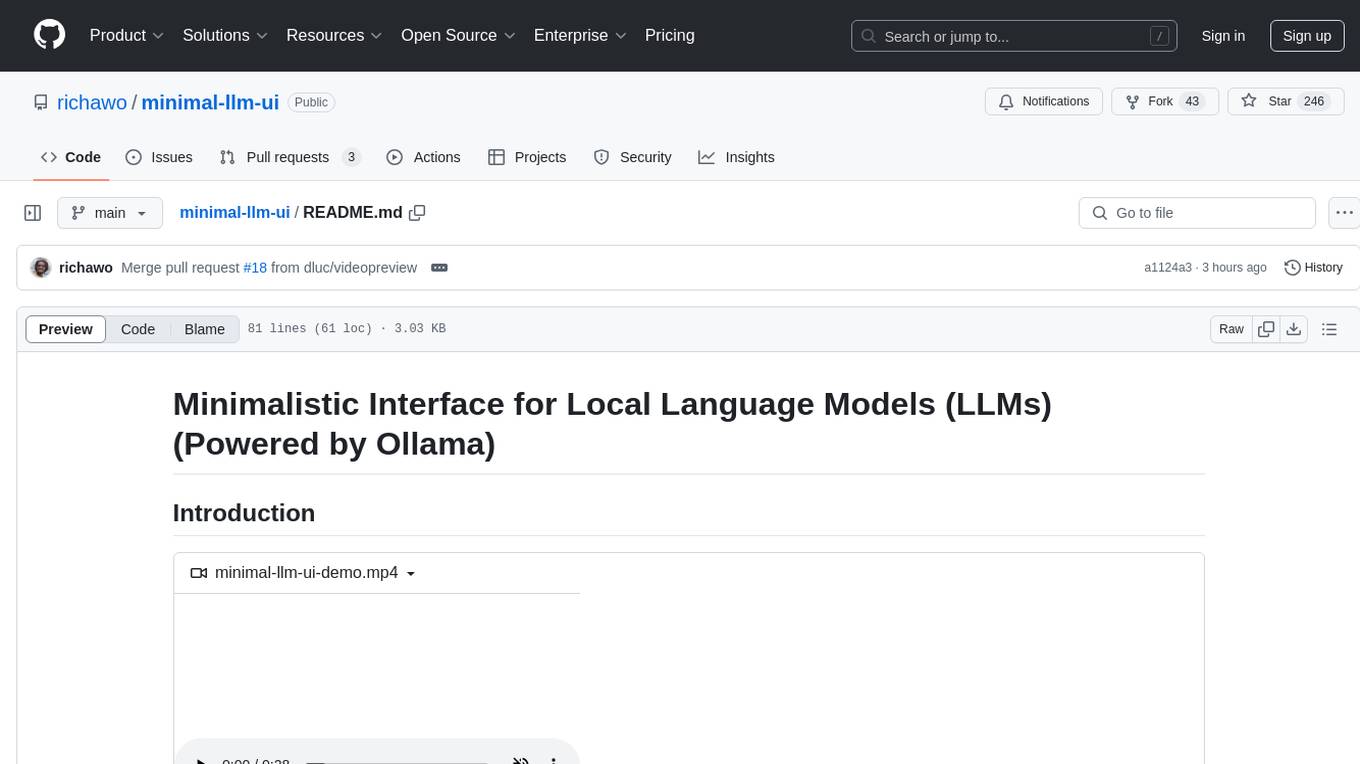
minimal-llm-ui
This minimalistic UI serves as a simple interface for Ollama models, enabling real-time interaction with Local Language Models (LLMs). Users can chat with models, switch between different LLMs, save conversations, and create parameter-driven prompt templates. The tool is built using React, Next.js, and Tailwind CSS, with seamless integration with LangchainJs and Ollama for efficient model switching and context storage.
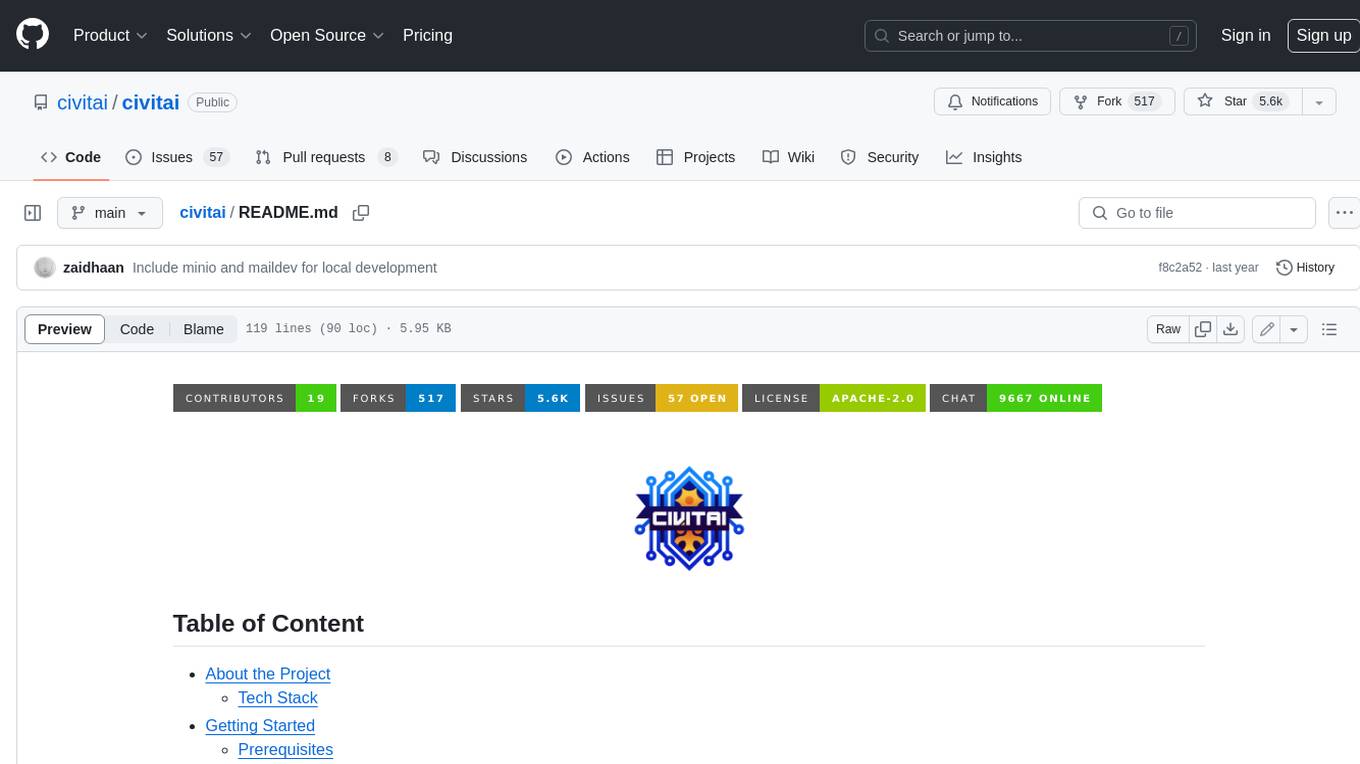
civitai
Civitai is a platform where people can share their stable diffusion models (textual inversions, hypernetworks, aesthetic gradients, VAEs, and any other crazy stuff people do to customize their AI generations), collaborate with others to improve them, and learn from each other's work. The platform allows users to create an account, upload their models, and browse models that have been shared by others. Users can also leave comments and feedback on each other's models to facilitate collaboration and knowledge sharing.
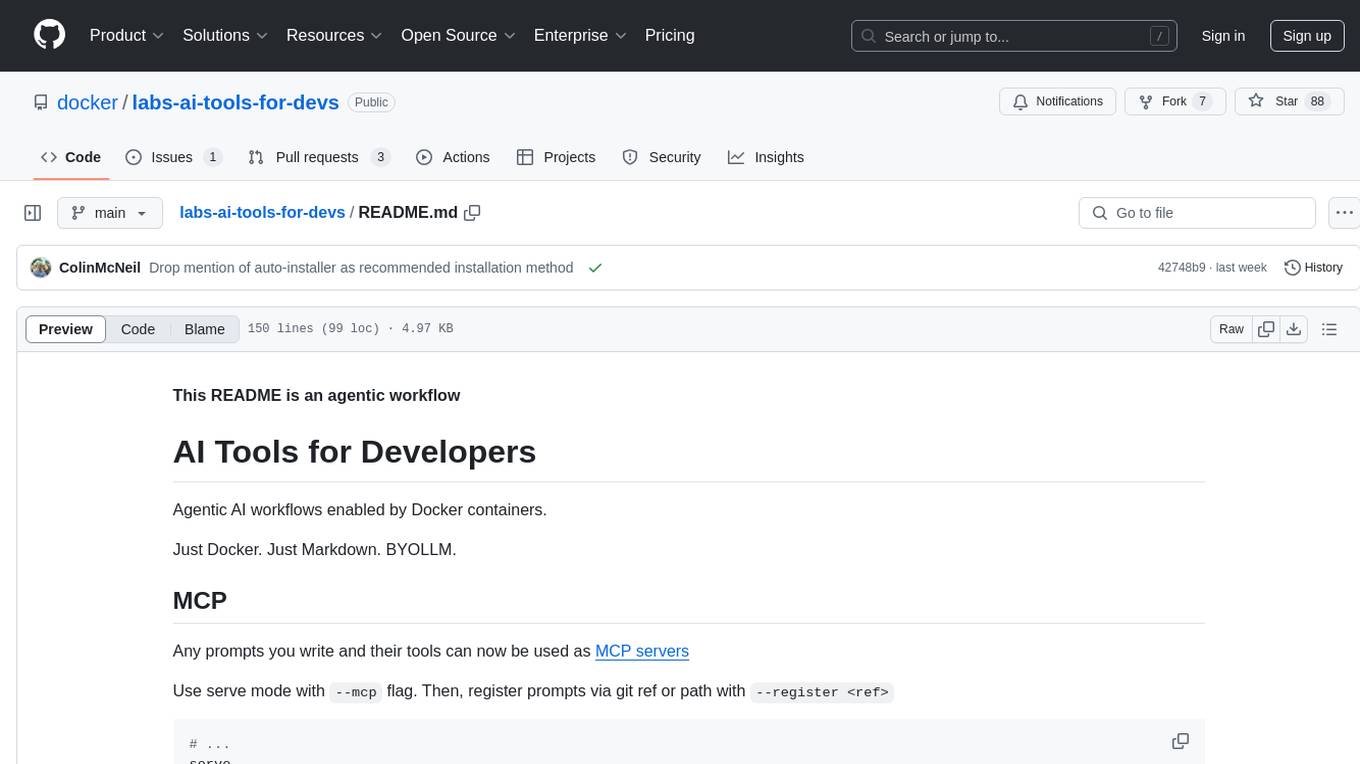
labs-ai-tools-for-devs
This repository provides AI tools for developers through Docker containers, enabling agentic workflows. It allows users to create complex workflows using Dockerized tools and Markdown, leveraging various LLM models. The core features include Dockerized tools, conversation loops, multi-model agents, project-first design, and trackable prompts stored in a git repo.
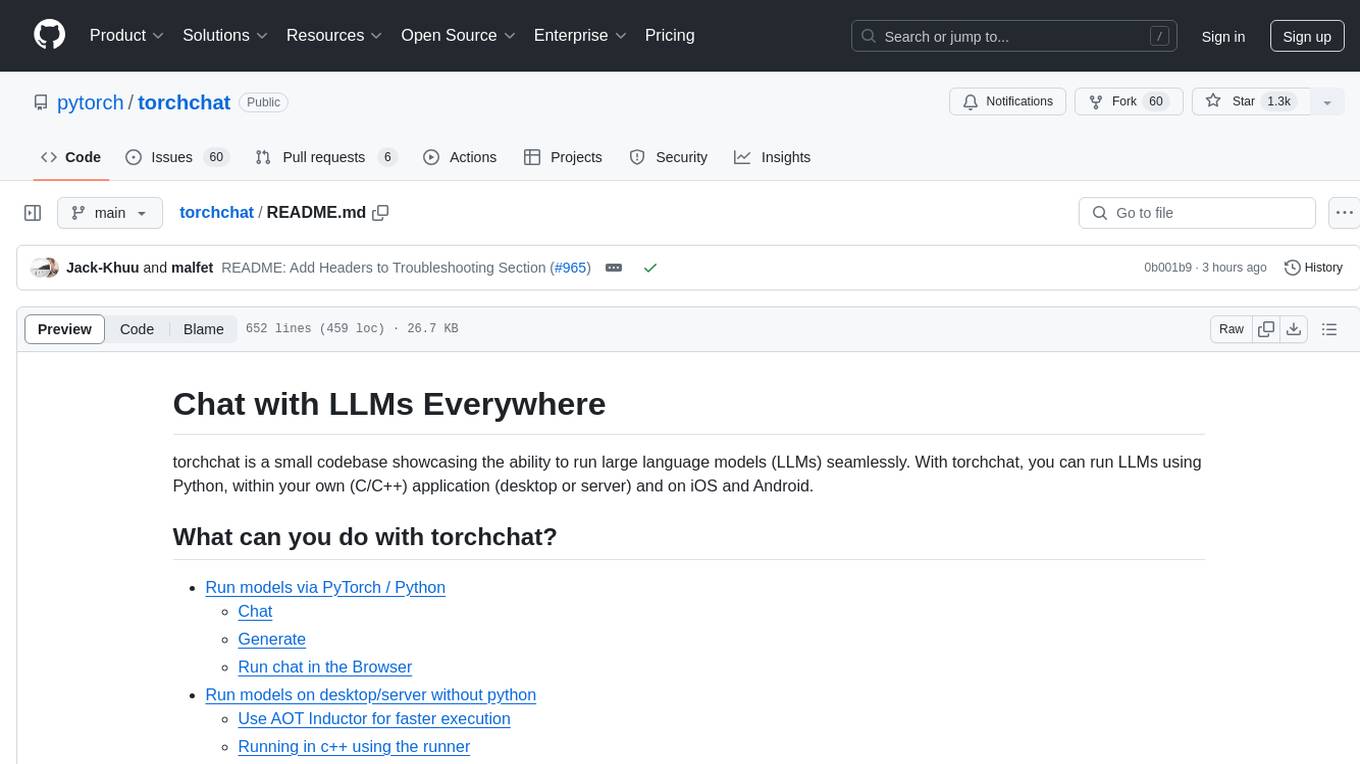
torchchat
torchchat is a codebase showcasing the ability to run large language models (LLMs) seamlessly. It allows running LLMs using Python in various environments such as desktop, server, iOS, and Android. The tool supports running models via PyTorch, chatting, generating text, running chat in the browser, and running models on desktop/server without Python. It also provides features like AOT Inductor for faster execution, running in C++ using the runner, and deploying and running on iOS and Android. The tool supports popular hardware and OS including Linux, Mac OS, Android, and iOS, with various data types and execution modes available.
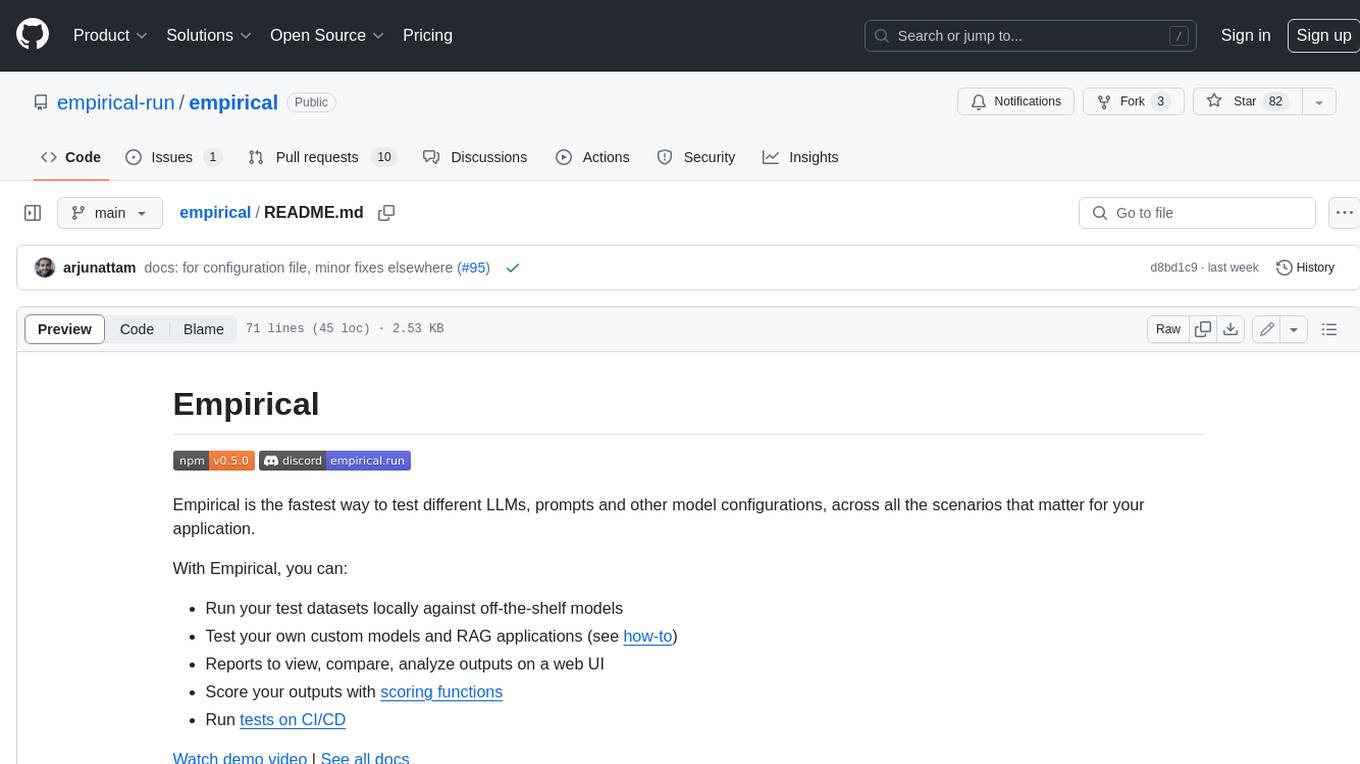
empirical
Empirical is a tool that allows you to test different LLMs, prompts, and other model configurations across all the scenarios that matter for your application. With Empirical, you can run your test datasets locally against off-the-shelf models, test your own custom models and RAG applications, view, compare, and analyze outputs on a web UI, score your outputs with scoring functions, and run tests on CI/CD.
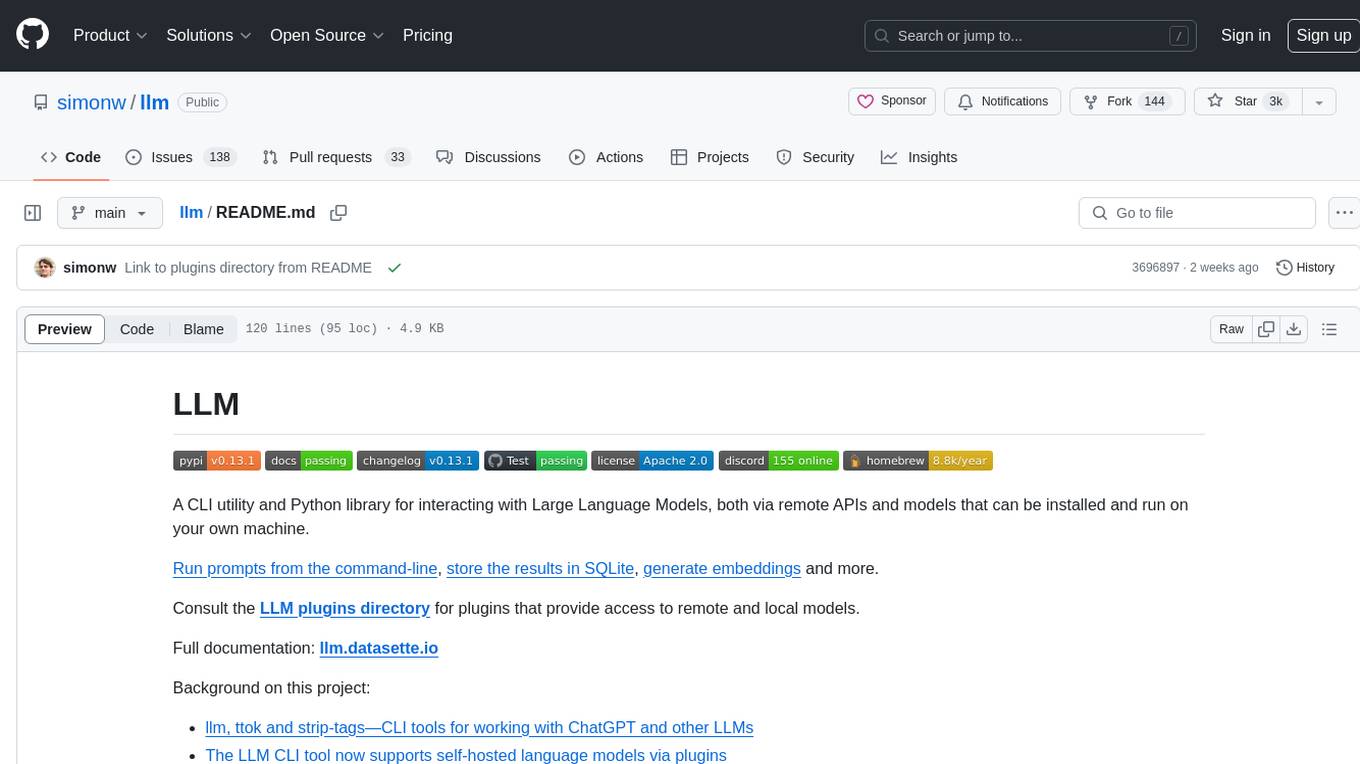
llm
LLM is a CLI utility and Python library for interacting with Large Language Models, both via remote APIs and models that can be installed and run on your own machine. It allows users to run prompts from the command-line, store results in SQLite, generate embeddings, and more. The tool supports self-hosted language models via plugins and provides access to remote and local models. Users can install plugins to access models by different providers, including models that can be installed and run on their own device. LLM offers various options for running Mistral models in the terminal and enables users to start chat sessions with models. Additionally, users can use a system prompt to provide instructions for processing input to the tool.
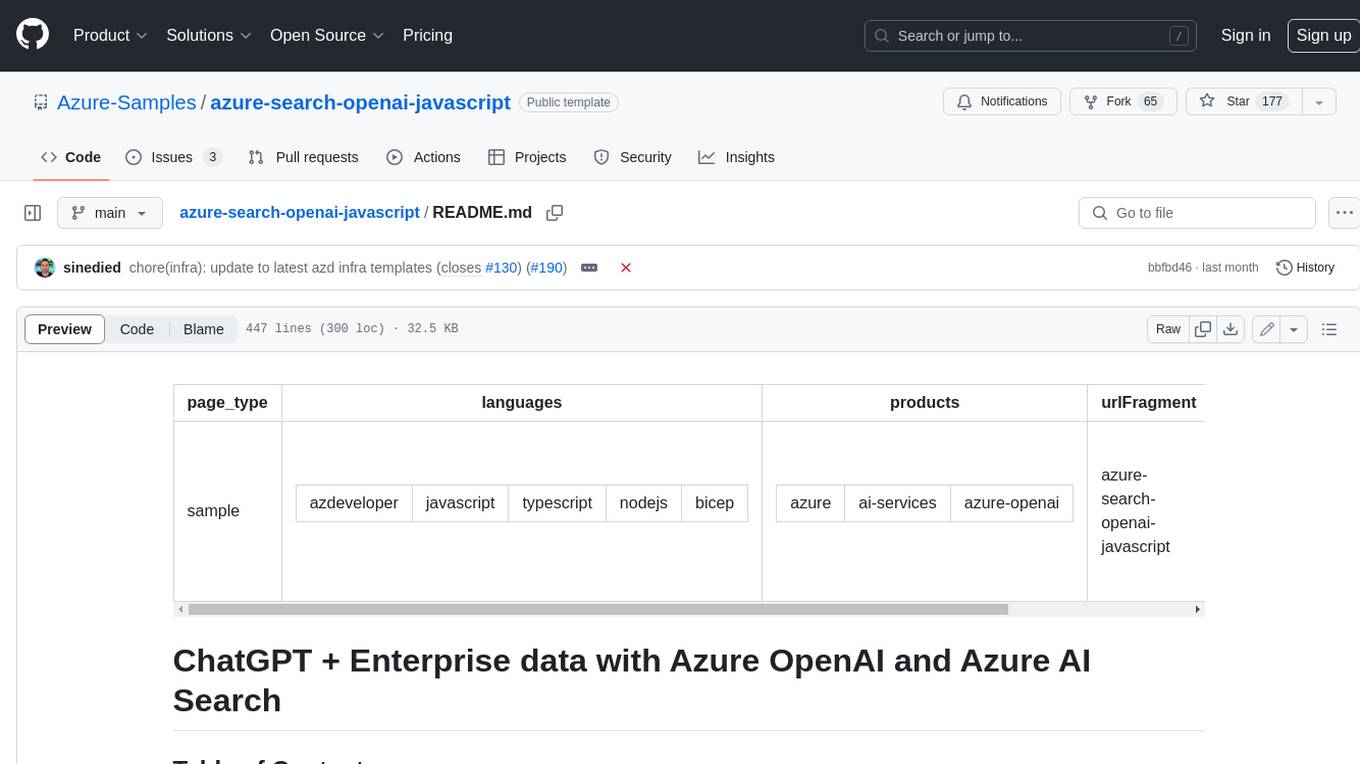
azure-search-openai-javascript
This sample demonstrates a few approaches for creating ChatGPT-like experiences over your own data using the Retrieval Augmented Generation pattern. It uses Azure OpenAI Service to access the ChatGPT model (gpt-35-turbo), and Azure AI Search for data indexing and retrieval.
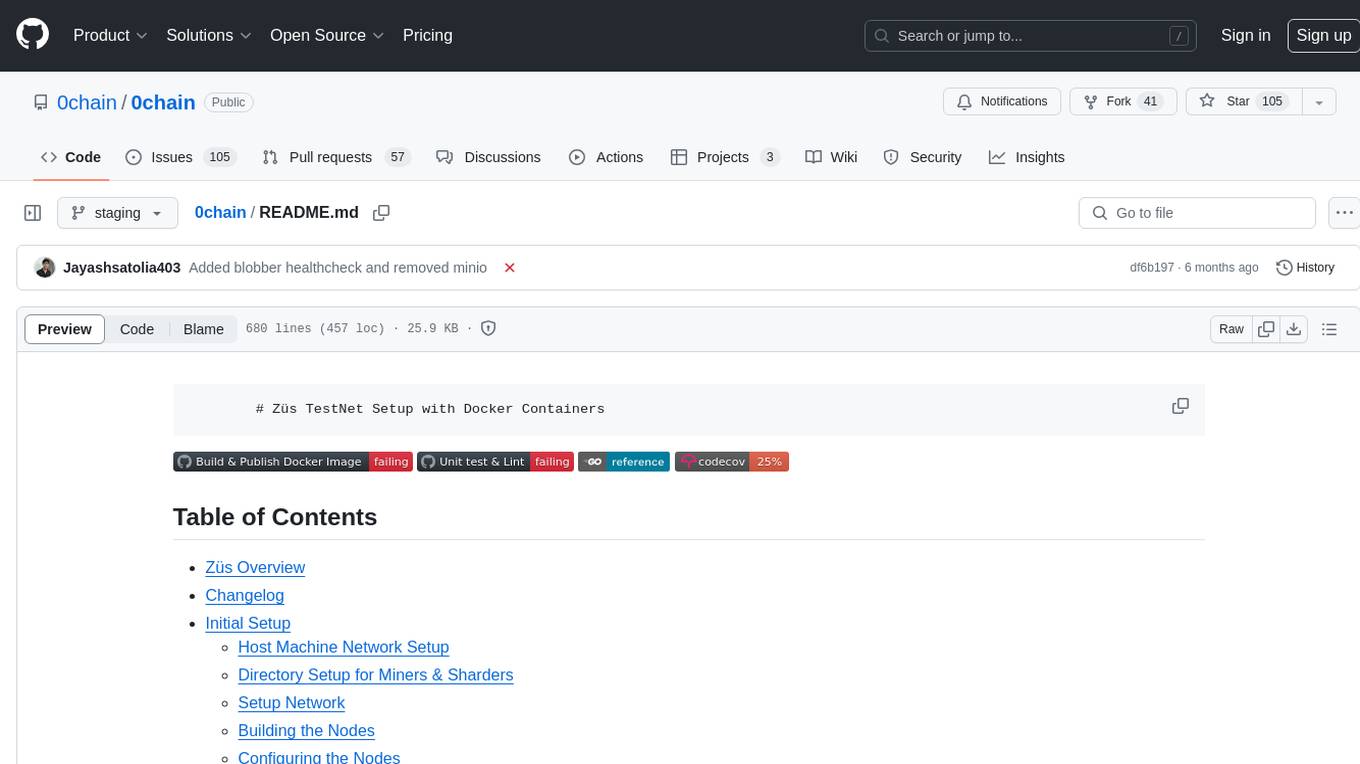
0chain
Züs is a high-performance cloud on a fast blockchain offering privacy and configurable uptime. It uses erasure code to distribute data between data and parity servers, allowing flexibility for IT managers to design for security and uptime. Users can easily share encrypted data with business partners through a proxy key sharing protocol. The ecosystem includes apps like Blimp for cloud migration, Vult for personal cloud storage, and Chalk for NFT artists. Other apps include Bolt for secure wallet and staking, Atlus for blockchain explorer, and Chimney for network participation. The QoS protocol challenges providers based on response time, while the privacy protocol enables secure data sharing. Züs supports hybrid and multi-cloud architectures, allowing users to improve regulatory compliance and security requirements.
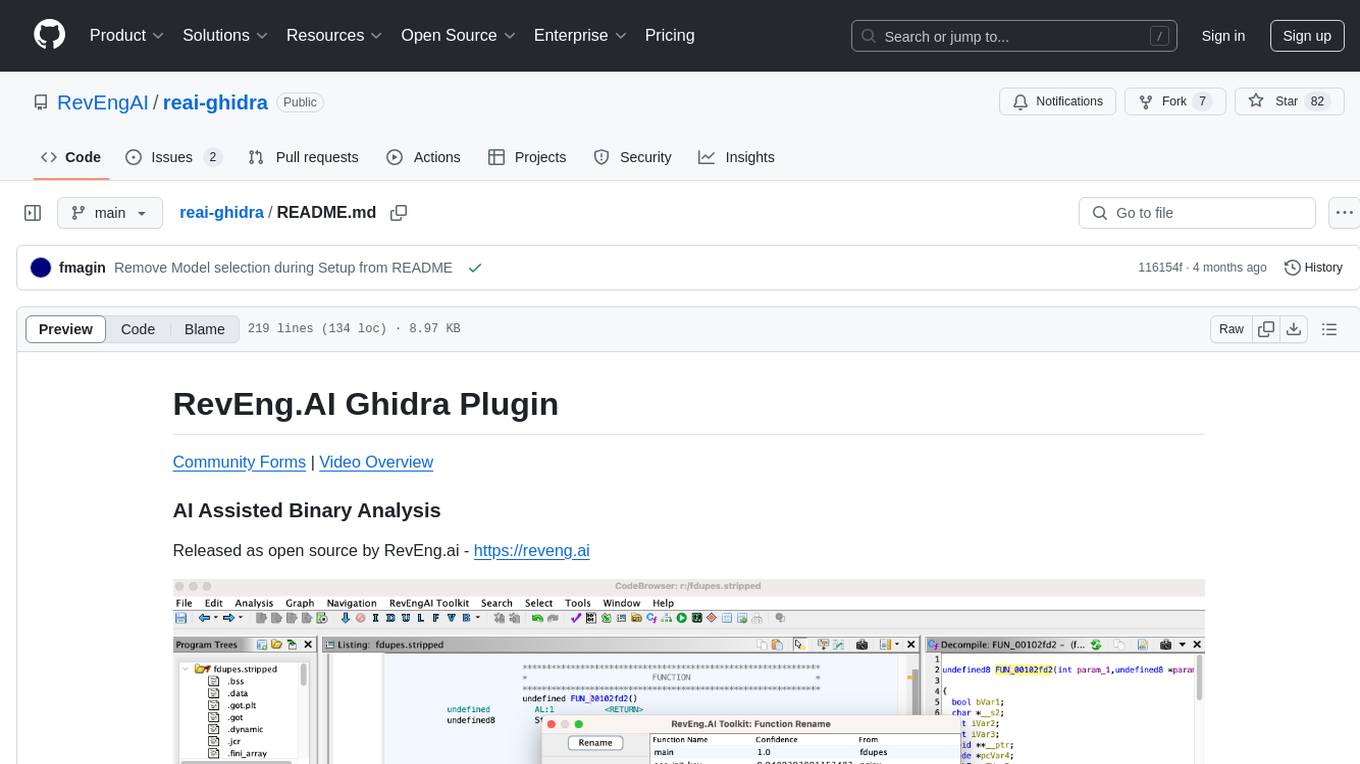
reai-ghidra
The RevEng.AI Ghidra Plugin by RevEng.ai allows users to interact with their API within Ghidra for Binary Code Similarity analysis to aid in Reverse Engineering stripped binaries. Users can upload binaries, rename functions above a confidence threshold, and view similar functions for a selected function.
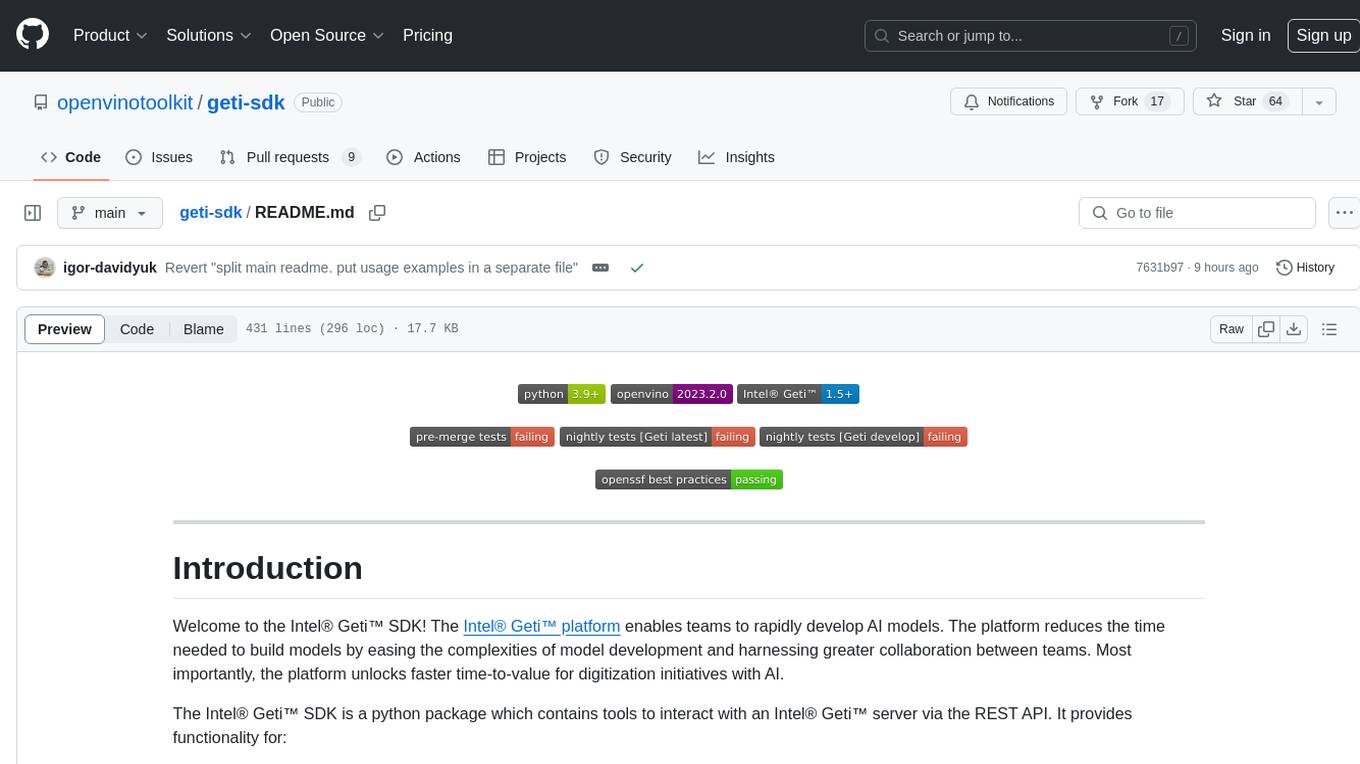
geti-sdk
The Intel® Geti™ SDK is a python package that enables teams to rapidly develop AI models by easing the complexities of model development and enhancing collaboration between teams. It provides tools to interact with an Intel® Geti™ server via the REST API, allowing for project creation, downloading, uploading, deploying for local inference with OpenVINO, setting project and model configuration, launching and monitoring training jobs, and media upload and prediction. The SDK also includes tutorial-style Jupyter notebooks demonstrating its usage.
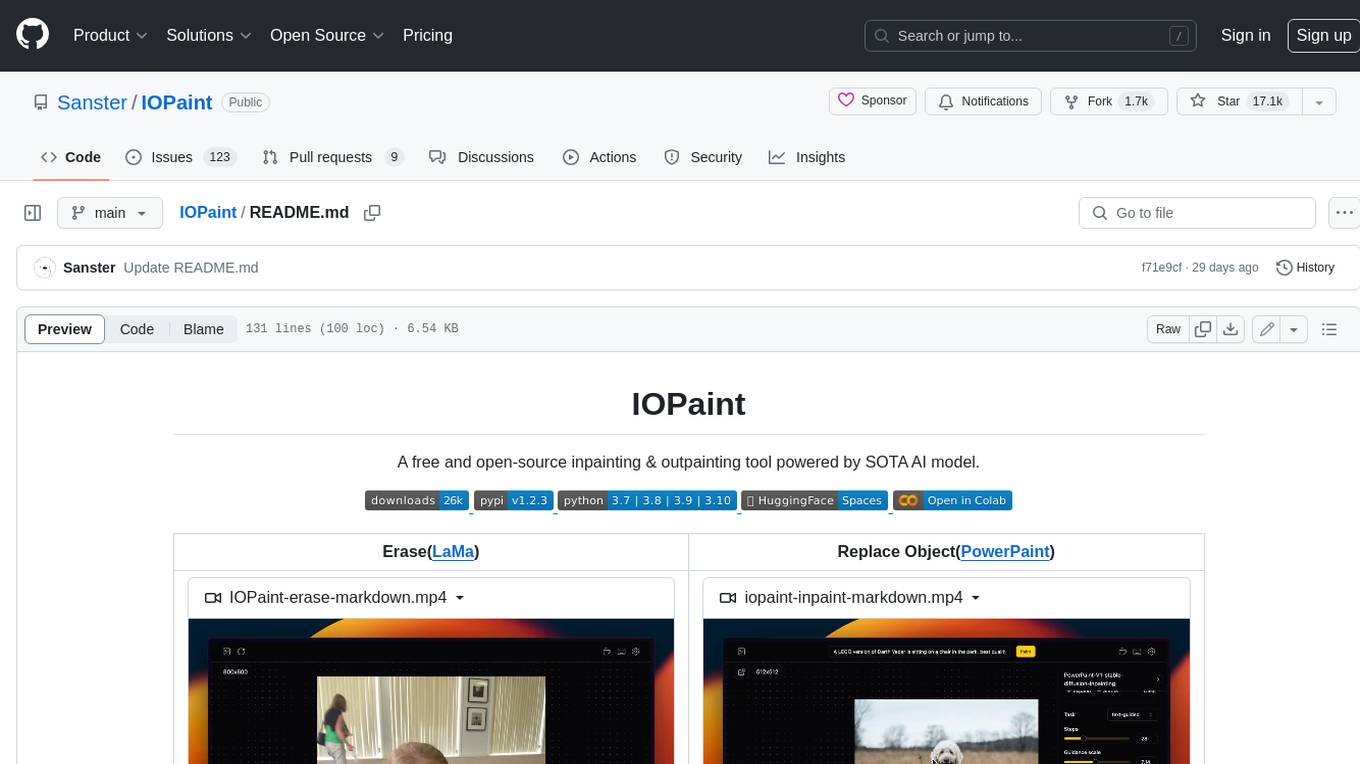
IOPaint
IOPaint is a free and open-source inpainting & outpainting tool powered by SOTA AI model. It supports various AI models to perform erase, inpainting, or outpainting tasks. Users can remove unwanted objects, defects, watermarks, or people from images using erase models. Additionally, diffusion models can replace objects or perform outpainting. The tool also offers plugins for interactive object segmentation, background removal, anime segmentation, super resolution, face restoration, and file management. IOPaint provides a web UI for easy access to the latest AI models and supports batch processing of images through the command line. Developers can contribute to the project by installing front-end dependencies, setting up the backend, and starting the development environment for both front-end and back-end components.
For similar tasks
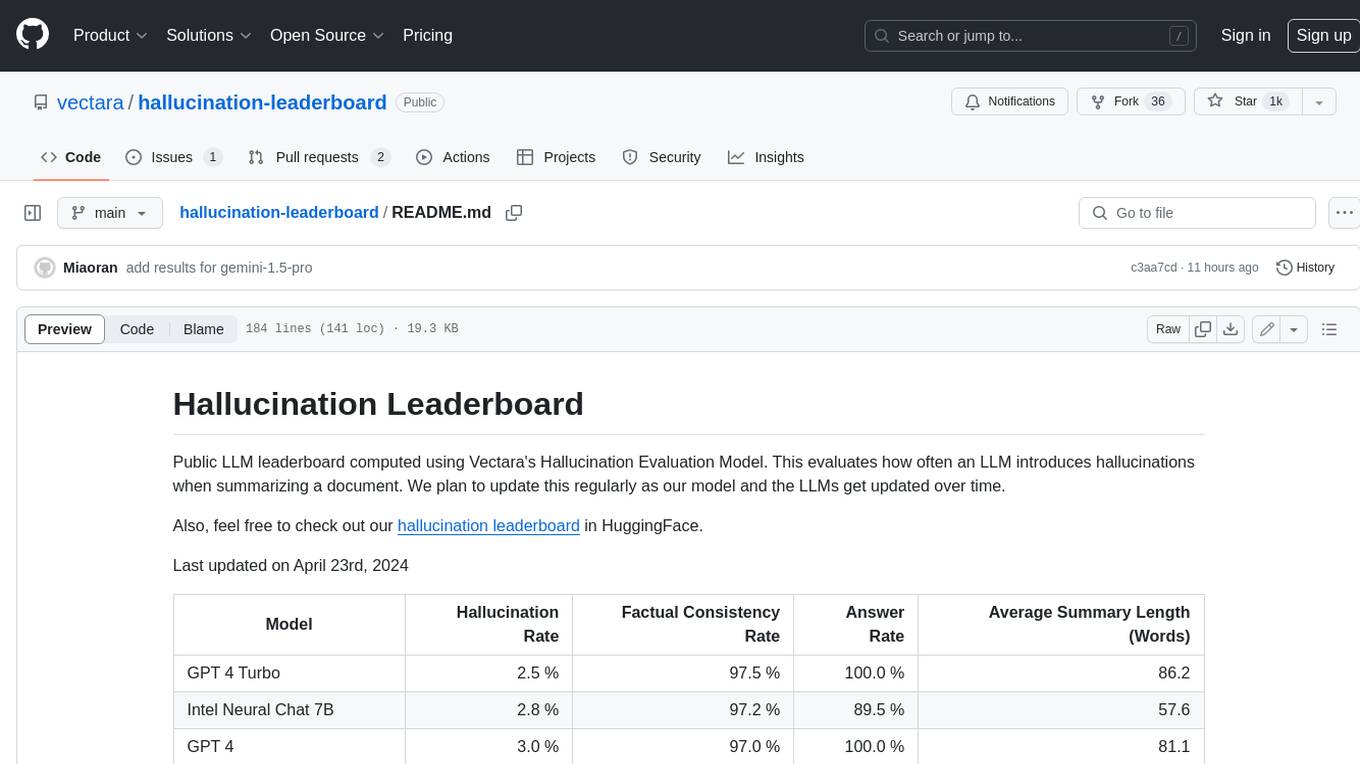
hallucination-leaderboard
This leaderboard evaluates the hallucination rate of various Large Language Models (LLMs) when summarizing documents. It uses a model trained by Vectara to detect hallucinations in LLM outputs. The leaderboard includes models from OpenAI, Anthropic, Google, Microsoft, Amazon, and others. The evaluation is based on 831 documents that were summarized by all the models. The leaderboard shows the hallucination rate, factual consistency rate, answer rate, and average summary length for each model.

h2o-llmstudio
H2O LLM Studio is a framework and no-code GUI designed for fine-tuning state-of-the-art large language models (LLMs). With H2O LLM Studio, you can easily and effectively fine-tune LLMs without the need for any coding experience. The GUI is specially designed for large language models, and you can finetune any LLM using a large variety of hyperparameters. You can also use recent finetuning techniques such as Low-Rank Adaptation (LoRA) and 8-bit model training with a low memory footprint. Additionally, you can use Reinforcement Learning (RL) to finetune your model (experimental), use advanced evaluation metrics to judge generated answers by the model, track and compare your model performance visually, and easily export your model to the Hugging Face Hub and share it with the community.
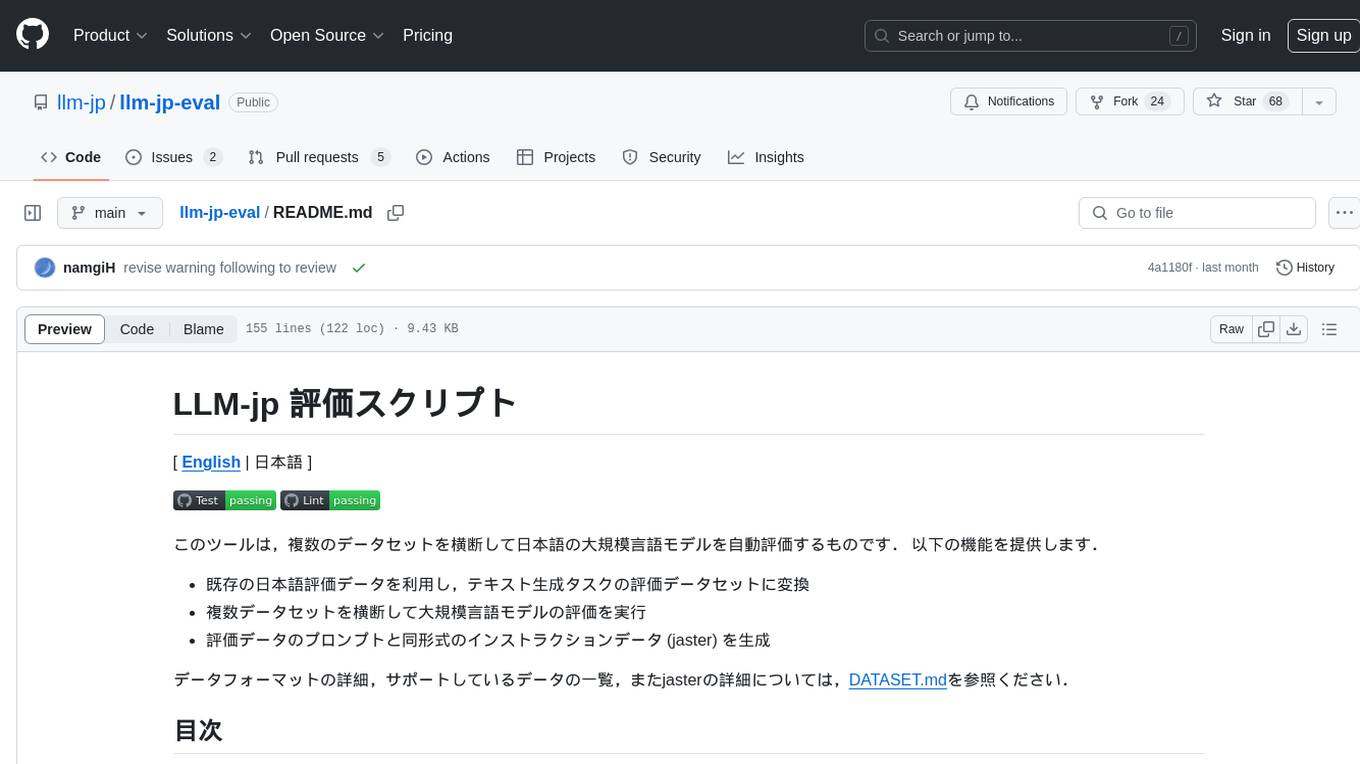
llm-jp-eval
LLM-jp-eval is a tool designed to automatically evaluate Japanese large language models across multiple datasets. It provides functionalities such as converting existing Japanese evaluation data to text generation task evaluation datasets, executing evaluations of large language models across multiple datasets, and generating instruction data (jaster) in the format of evaluation data prompts. Users can manage the evaluation settings through a config file and use Hydra to load them. The tool supports saving evaluation results and logs using wandb. Users can add new evaluation datasets by following specific steps and guidelines provided in the tool's documentation. It is important to note that using jaster for instruction tuning can lead to artificially high evaluation scores, so caution is advised when interpreting the results.
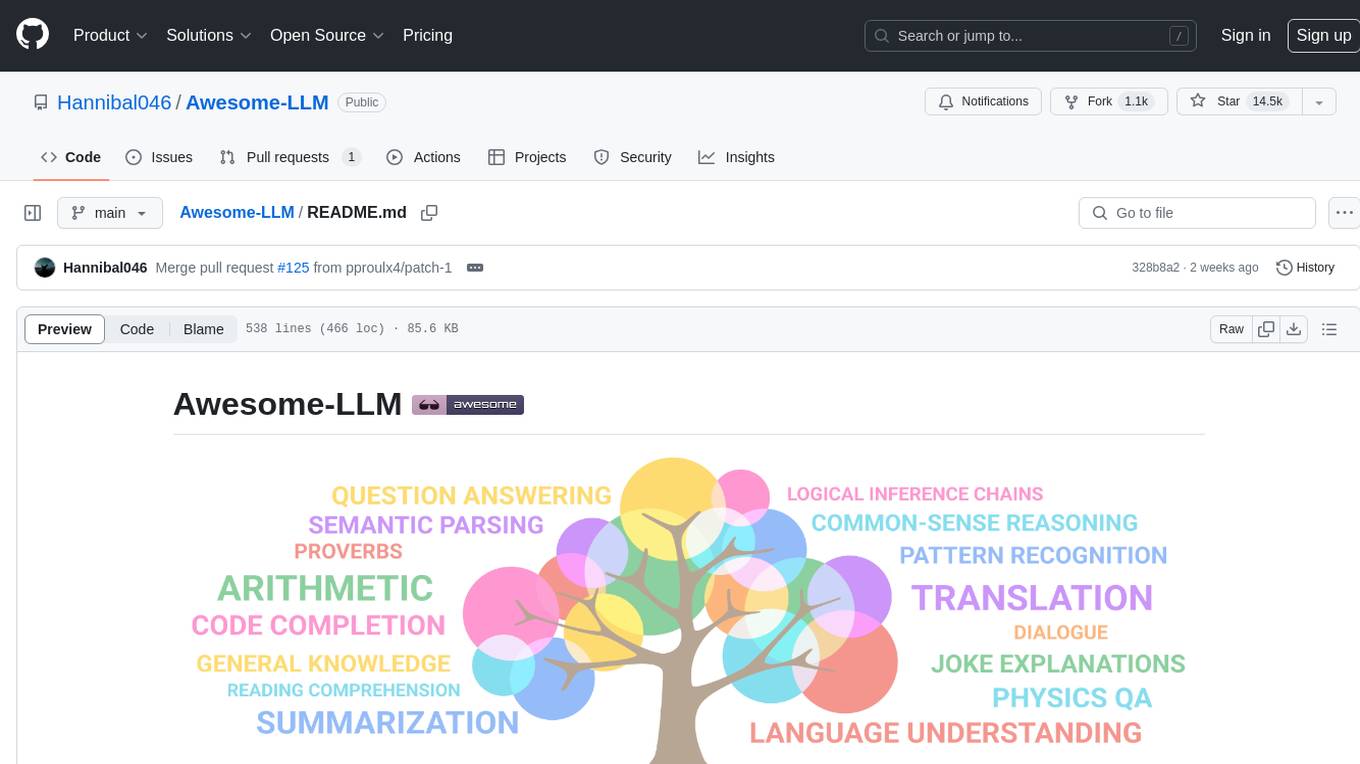
Awesome-LLM
Awesome-LLM is a curated list of resources related to large language models, focusing on papers, projects, frameworks, tools, tutorials, courses, opinions, and other useful resources in the field. It covers trending LLM projects, milestone papers, other papers, open LLM projects, LLM training frameworks, LLM evaluation frameworks, tools for deploying LLM, prompting libraries & tools, tutorials, courses, books, and opinions. The repository provides a comprehensive overview of the latest advancements and resources in the field of large language models.
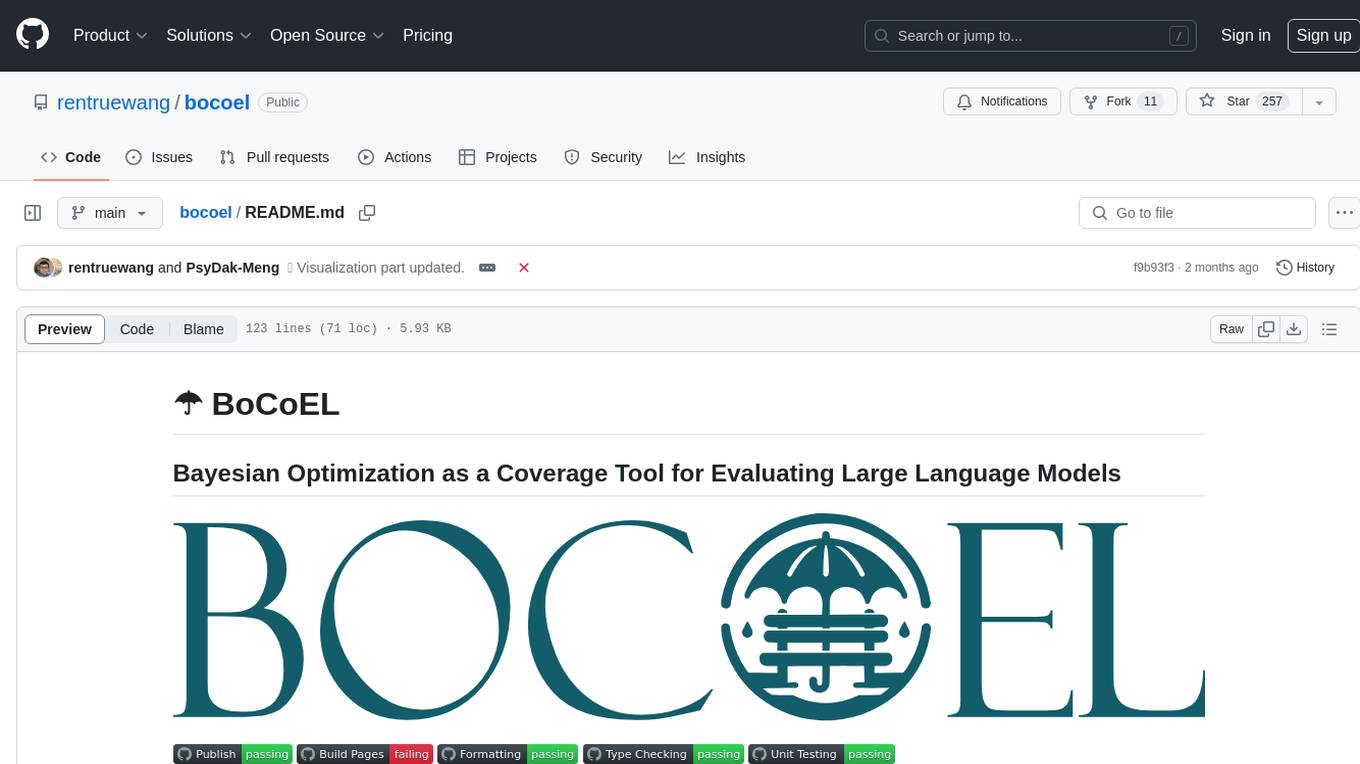
bocoel
BoCoEL is a tool that leverages Bayesian Optimization to efficiently evaluate large language models by selecting a subset of the corpus for evaluation. It encodes individual entries into embeddings, uses Bayesian optimization to select queries, retrieves from the corpus, and provides easily managed evaluations. The tool aims to reduce computation costs during evaluation with a dynamic budget, supporting models like GPT2, Pythia, and LLAMA through integration with Hugging Face transformers and datasets. BoCoEL offers a modular design and efficient representation of the corpus to enhance evaluation quality.
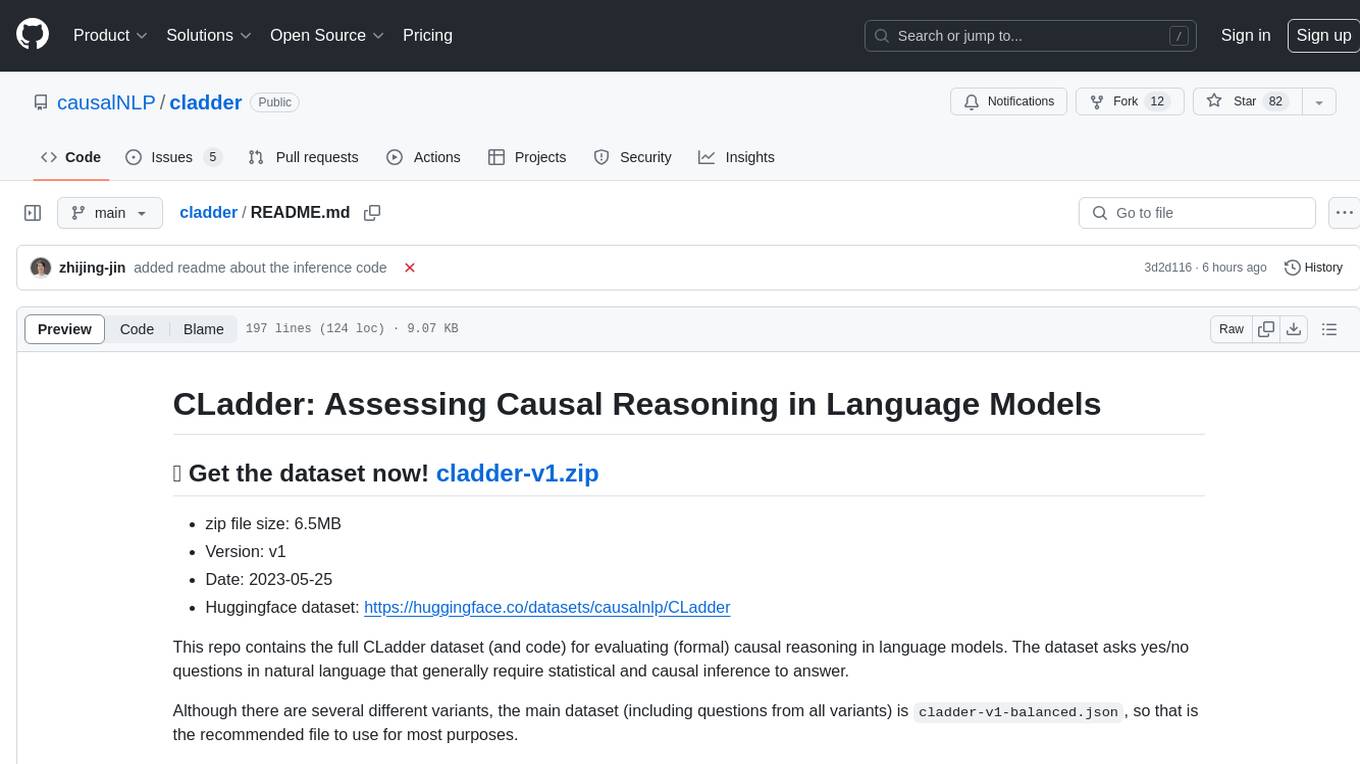
cladder
CLadder is a repository containing the CLadder dataset for evaluating causal reasoning in language models. The dataset consists of yes/no questions in natural language that require statistical and causal inference to answer. It includes fields such as question_id, given_info, question, answer, reasoning, and metadata like query_type and rung. The dataset also provides prompts for evaluating language models and example questions with associated reasoning steps. Additionally, it offers dataset statistics, data variants, and code setup instructions for using the repository.
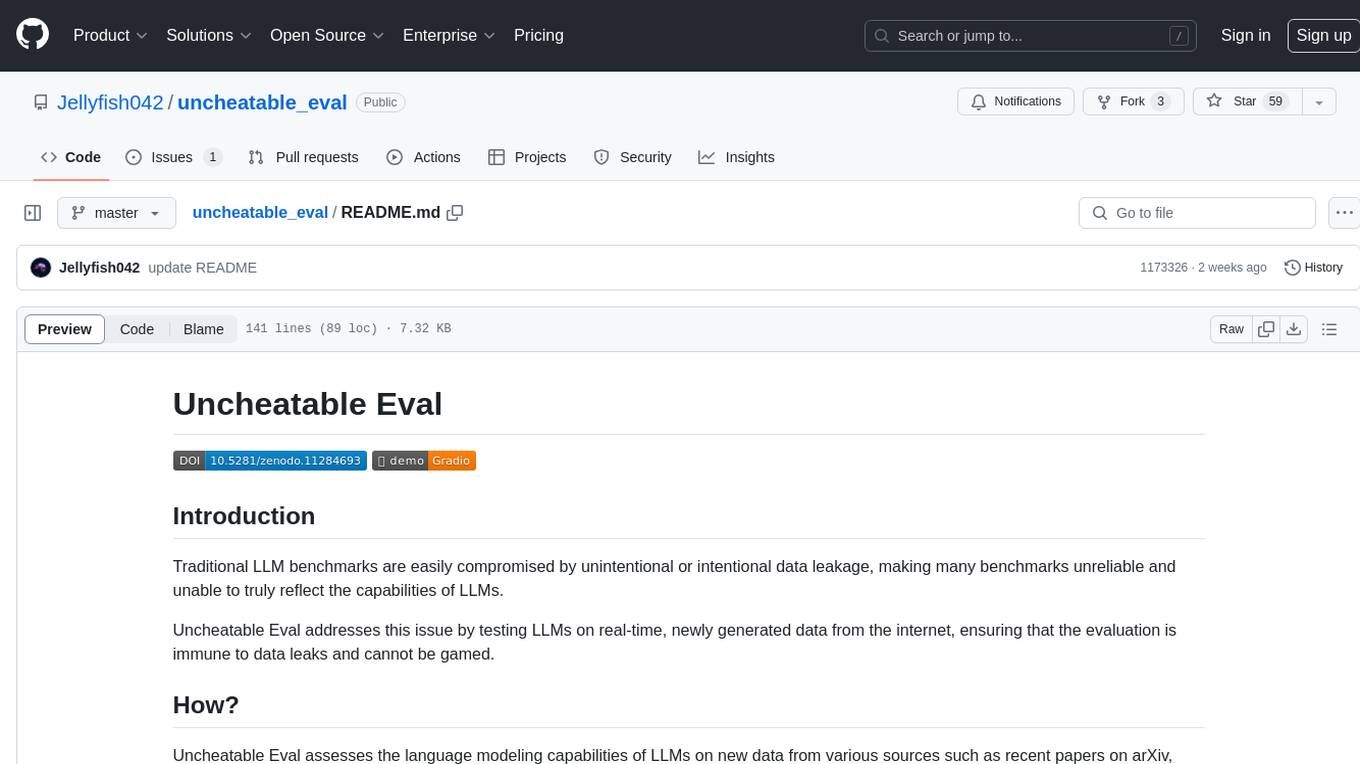
uncheatable_eval
Uncheatable Eval is a tool designed to assess the language modeling capabilities of LLMs on real-time, newly generated data from the internet. It aims to provide a reliable evaluation method that is immune to data leaks and cannot be gamed. The tool supports the evaluation of Hugging Face AutoModelForCausalLM models and RWKV models by calculating the sum of negative log probabilities on new texts from various sources such as recent papers on arXiv, new projects on GitHub, news articles, and more. Uncheatable Eval ensures that the evaluation data is not included in the training sets of publicly released models, thus offering a fair assessment of the models' performance.
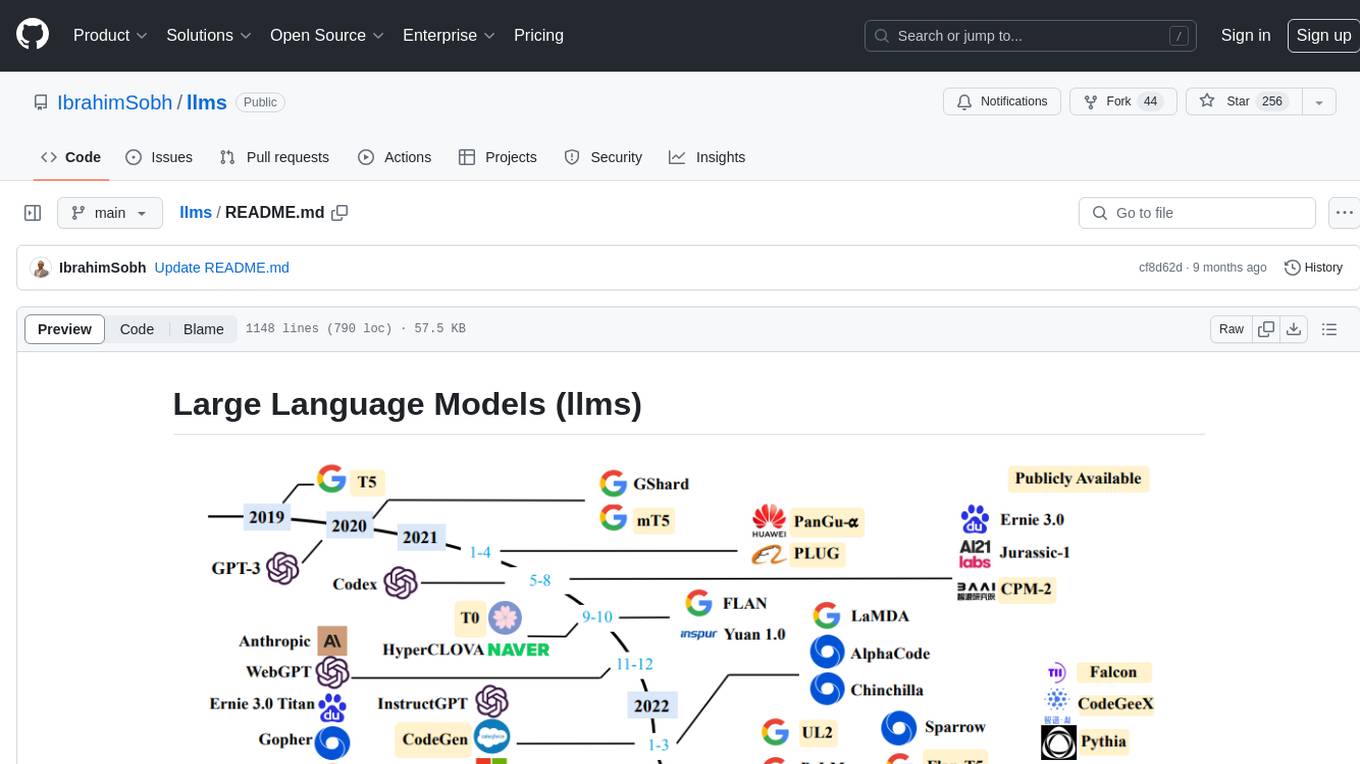
llms
The 'llms' repository is a comprehensive guide on Large Language Models (LLMs), covering topics such as language modeling, applications of LLMs, statistical language modeling, neural language models, conditional language models, evaluation methods, transformer-based language models, practical LLMs like GPT and BERT, prompt engineering, fine-tuning LLMs, retrieval augmented generation, AI agents, and LLMs for computer vision. The repository provides detailed explanations, examples, and tools for working with LLMs.
For similar jobs

sweep
Sweep is an AI junior developer that turns bugs and feature requests into code changes. It automatically handles developer experience improvements like adding type hints and improving test coverage.

teams-ai
The Teams AI Library is a software development kit (SDK) that helps developers create bots that can interact with Teams and Microsoft 365 applications. It is built on top of the Bot Framework SDK and simplifies the process of developing bots that interact with Teams' artificial intelligence capabilities. The SDK is available for JavaScript/TypeScript, .NET, and Python.

ai-guide
This guide is dedicated to Large Language Models (LLMs) that you can run on your home computer. It assumes your PC is a lower-end, non-gaming setup.

classifai
Supercharge WordPress Content Workflows and Engagement with Artificial Intelligence. Tap into leading cloud-based services like OpenAI, Microsoft Azure AI, Google Gemini and IBM Watson to augment your WordPress-powered websites. Publish content faster while improving SEO performance and increasing audience engagement. ClassifAI integrates Artificial Intelligence and Machine Learning technologies to lighten your workload and eliminate tedious tasks, giving you more time to create original content that matters.

chatbot-ui
Chatbot UI is an open-source AI chat app that allows users to create and deploy their own AI chatbots. It is easy to use and can be customized to fit any need. Chatbot UI is perfect for businesses, developers, and anyone who wants to create a chatbot.

BricksLLM
BricksLLM is a cloud native AI gateway written in Go. Currently, it provides native support for OpenAI, Anthropic, Azure OpenAI and vLLM. BricksLLM aims to provide enterprise level infrastructure that can power any LLM production use cases. Here are some use cases for BricksLLM: * Set LLM usage limits for users on different pricing tiers * Track LLM usage on a per user and per organization basis * Block or redact requests containing PIIs * Improve LLM reliability with failovers, retries and caching * Distribute API keys with rate limits and cost limits for internal development/production use cases * Distribute API keys with rate limits and cost limits for students

uAgents
uAgents is a Python library developed by Fetch.ai that allows for the creation of autonomous AI agents. These agents can perform various tasks on a schedule or take action on various events. uAgents are easy to create and manage, and they are connected to a fast-growing network of other uAgents. They are also secure, with cryptographically secured messages and wallets.

griptape
Griptape is a modular Python framework for building AI-powered applications that securely connect to your enterprise data and APIs. It offers developers the ability to maintain control and flexibility at every step. Griptape's core components include Structures (Agents, Pipelines, and Workflows), Tasks, Tools, Memory (Conversation Memory, Task Memory, and Meta Memory), Drivers (Prompt and Embedding Drivers, Vector Store Drivers, Image Generation Drivers, Image Query Drivers, SQL Drivers, Web Scraper Drivers, and Conversation Memory Drivers), Engines (Query Engines, Extraction Engines, Summary Engines, Image Generation Engines, and Image Query Engines), and additional components (Rulesets, Loaders, Artifacts, Chunkers, and Tokenizers). Griptape enables developers to create AI-powered applications with ease and efficiency.




